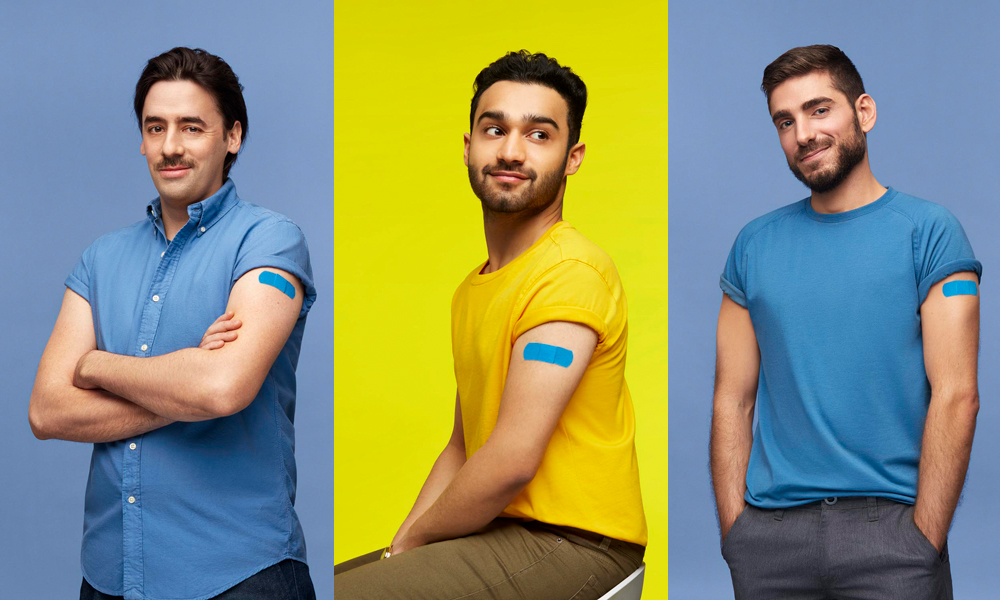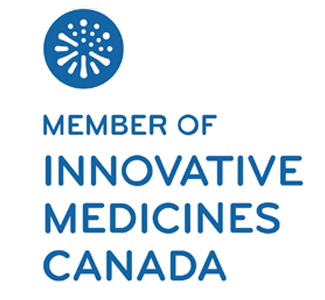What you need to know to help protect yourself against certain HPV-related cancers and diseases.
You’ve probably heard that human papillomavirus (HPV), a sexually transmitted infection (STI), can in some cases, cause certain types of cancer. But what is HPV exactly, and why is it important for both males and females to educate themselves and know the common facts (and myths)?1, 2
There are more than 200 types of HPV, and about 40 kinds can infect the genital area – rectum, anus, penis, scrotum, vulva, vagina and cervix – as well as the mouth and throat. These kinds of HPV are spread during sexual contact.1, 2
HPV is usually harmless and can go away by itself, but some types can lead to cancer or genital warts, which is why it’s important to educate yourself about the health effects of HPV and about HPV vaccines.2
Read on to learn some important facts about HPV and be sure to visit gardasil9.ca/patient-guide for more information on HPV prevention with GARDASIL®9.
GARDASIL®9 has been issued market authorization with conditions in individuals 9 through 45 years of age for the prevention of certain head and neck cancers, such as throat and back of mouth cancers caused by HPV types 16, 18, 31, 33, 45, 52 and 58, pending the results of trials to verify its clinical benefit. GARDASIL®9 helps protect individuals 9 through 45 years of age against cervical, vulvar, vaginal and anal cancers caused by HPV types 16, 18, 31, 33, 45, 52 and 58 and genital warts caused by HPV types 6 and 11. GARDASIL®9 does not treat HPV infection, cancers and diseases and may not protect everyone who gets vaccinated. GARDASIL®9 is not recommended for use in pregnant women. Women should still get routine cervical cancer screening. Side effects and allergic reactions can occur.
1. HPV is one of the most common STIs in Canada.2
It’s true. Both men and women can contract HPV, and it is thought to be the most common STI in the world. Most people are infected with HPV at some time in their lives, and in Canada, it’s estimated that 75% of sexually active people will have at least one HPV infection during their lifetime.2
2. Being in a monogamous relationship does not protect you from an HPV infection.2
Anyone who has sex can get HPV, and all it takes is one infected partner for you to be infected. Like many STIs, people can have an HPV infection and spread the virus without knowing it, because they may not have any visible symptoms or know they are infected.2
3. A number of cancers and diseases are caused by HPV1
Researchers have found that HPV causes at least 70% of certain head and neck cancers (such as throat and back of mouth cancers) in both men and women. Looking back to 2012, oropharyngeal cancer (which affects your oropharynx, your tonsils, the back part of your tongue and soft palate, and the sides and back of your throat) was the most common HPV-related cancer in Canada. In that year, there were 1,335 cases of oropharyngeal cancer, as well as 1,300 cases of cervical cancer and 475 cases of anal cancer. In 2020, it was estimated that the rate of oropharyngeal cancer was approximately 4.5 times higher in males than females.1, 3-5
4. Condoms may not be enough to protect you against HPV2
Using condoms may reduce your chances of getting this highly contagious infection – but they do not provide full protection. Wearing a condom only protects the area that the condom covers. You can still get infected just by skin-to-skin or oral contact with the genital area, and without having intercourse. That said, using a latex male condom or a female condom correctly during sex (including anal and oral) is a good way to help prevent any STI.2, 6
5. Both men and women should visit a doctor for regular health exams if they think they are at risk of contracting HPV.2
While there is currently no approved test for HPV in men, men can be examined by their doctor for genital warts (which are caused by HPV) and signs of HPV-related cancers. The fact that there is no screening for HPV in males makes HPV vaccination one of the best prevention methods. For individuals with a cervix, knowing that HPV causes nearly 100% of cervical cancer cases, regular Pap tests are the best way to find abnormal cervical cells early so they can be treated before they develop into cervical cancer.1, 2

HPV Vaccination: What Everyone Should Know
- You can get the HPV virus at any point in your life that you are sexually active.2
- If you’re aged 18 through 45, it’s not too late to get vaccinated.1
- An HPV vaccination is important for both females and males because it can help protect from various HPV related cancers and diseases.1, 2
GARDASIL®9 is the first and only vaccine that helps protect individuals aged 9 to 45 against nine HPV types that cause certain HPV-related cancers and diseases. It can also help protect against 6 HPV-related cancers and diseases: head and neck, anal, vulvar, vaginal, and cervical cancer, and genital warts.1
You may be covered
Many private insurance plans reimburse some or all of the cost of GARDASIL®9, so check with your insurance provider. Even if your plan does not include coverage for this vaccine, it may still be covered under your health spending or wellness account. If you have a drug benefit wallet card, simply present your card to a pharmacist along with the Drug Identification Number (DIN) 02437058 for GARDASIL®9 and ask if you are covered.7
Multiple clinics and pharmacies offer GARDASIL®9. In certain provinces, you may need a prescription to get it reimbursed.
Public coverage for GARDASIL®9 is also available and varies by province or territory, and by age or risk factor. You can ask your healthcare professional such as your doctor, nurse, or pharmacist, or visit your provincial government website for more information.
Talk to your healthcare professional to see if GARDASIL®9 is right for you. For more information, visit gardasil9.ca/patient-guide.



® Merck Sharp & Dohme LLC. Used under license.
© 2023 Merck & Co., Inc., Rahway, NJ, USA and its affiliates. All rights reserved
CA-GSL-00826
References
1. Merck Canada Inc. GARDASIL®9 Product Monograph. July 7, 2023.
2. The Society of Obstetricians and Gynaecologists of Canada. What is HPV? Available at: www.hpvinfo.ca. Last accessed August 11, 2023.
3. Canadian Cancer Society. What is oropharyngeal cancer? Available at: https://cancer.ca/en/cancer-information/cancer-types/oropharyngeal/what-is-oropharyngeal-cancer. Last accessed September 1, 2023.
4. Canadian Cancer Society, Statistics Canada, Public Health Agency of Canada, Provincial/Territorial Cancer Registries. Canadian Cancer Statistics, 2016. Special topic: HPV-associated cancers. Available upon request at: stats@cancer.ca. Last accessed September 1, 2023.
5. Bruni L, et al. ICO/IARC Information Centre on HPV and Cancer (HPV Information Centre). Human Papillomavirus and Related Diseases in Canada. Summary Report 22 October 2021. Available at: https://hpvcentre.net/statistics/reports/CAN.pdf?t=1565188933974. Last accessed August 2, 2023.
6. Centers for Disease Control and Prevention. Available at: https://www.cdc.gov/. Last accessed August 3, 2023.
7. Health Canada. Drug Product Database: GARDASIL®9. Available at: https://health-products.canada.ca/dpd-bdpp/. Last accessed February 3, 2022.






POST A COMMENT